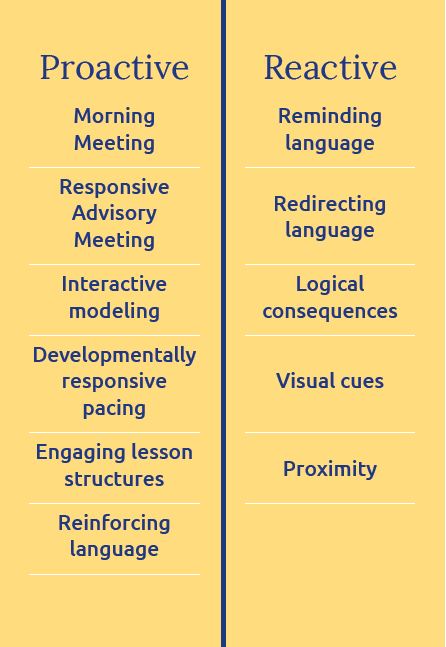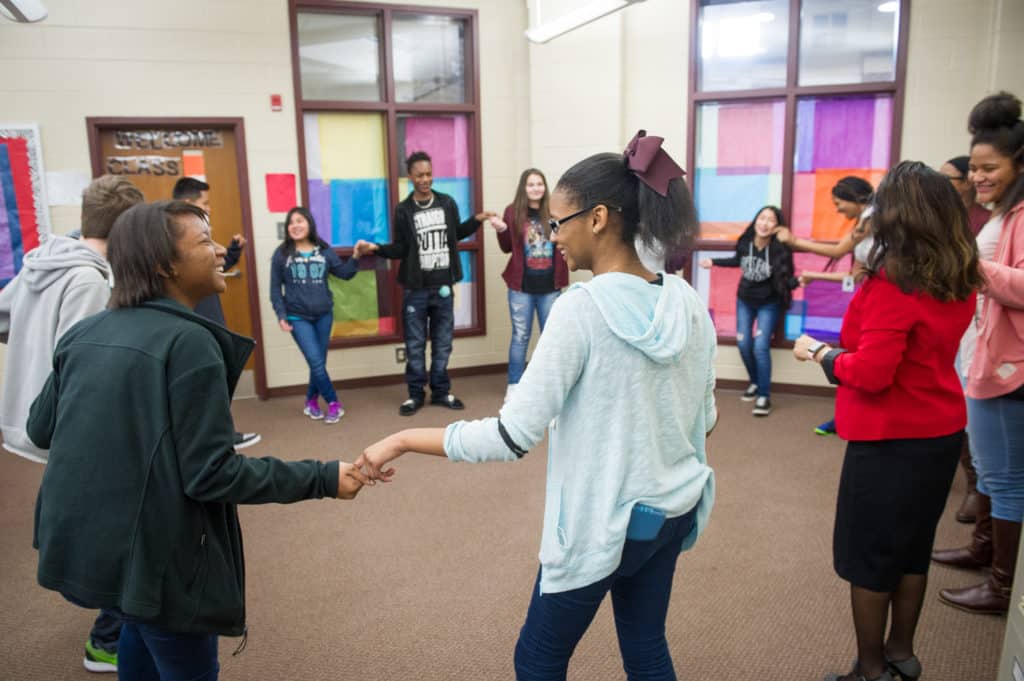With the changes in fall weather outside, the weather inside the classroom is likely changing too. As a result, teachers often find themselves responding to misbehavior more than they did earlier in the school year. If this sounds familiar, it’s time for a balance check and realignment!

Do a Balance Check
STEP 1 – Ask questions
You know your focus has switched from proactive practices to more reactive discipline practices if:
- You consistently feel more tired or frustrated at the end of the school day.
- The classroom community is feeling less positive.
- You stop frequently during lessons to get students back on track.
- Students are struggling to meet your expectations for cooperation, assertiveness, responsibility, empathy, or self-control.
STEP 2 – Collect evidence
- Choose two times of day—once in the morning and once in the afternoon.
- Use your phone or video recorder to record short segments (5–15 minutes) of class time, or invite a colleague to observe during this time.
- Use the video or feedback to reflect on five items:
a. How often did you model an expected behavior or ask students to model it before they began an activity or task?
b. How often did you refer to the rules to remind students of positive expectations before they began an activity or talk?
c. How often did you reinforce students’ behavior when they showed the expected behavior or skill when it was being used?
d. How often did you redirect a student’s misbehavior?
e.How often did you use a logical consequence to stop a behavior mistake?
The goal is that you are being proactive (a, b, and c) more often than you are being reactive (d and e). Don’t throw out your reactive practices though! They are an essential part of teaching discipline. This balance check is a way to be sure they aren’t the primary way you are approaching discipline.
If you find that your discipline balance is tipping to more reactive, it’s not too late to correct course!
Realignment: Getting Your Balance Back
All teachers and students can benefit from a realignment. If you’re ready for that too, then kudos on taking those steps! These key practices are tried and true ideas for re-emphasizing proactive discipline:
- Lead well-planned, purposeful, and well-managed Morning Meetings/Responsive Advisory Meetings to meet students’ needs for belonging, significance, and fun.
- Notice what’s going well and let individual students know what you notice through reinforcing language. When the whole class is doing well, use reinforcing language to let them know that too!
- Check your lesson pacing and level of movement and interaction throughout the day. These may need to be enhanced to meet students’ developmental learning needs.
- Consider what social-emotional skills students might need to strengthen in order to be more successful in school, and then teach those skills proactively.
Go Slow to Go Fast
Once you’re back in balance and feel like it’s time to speed up with teaching content and discipline, remember to pace yourself. When it’s time to speed up, do so incrementally so students can keep up and you can all feel more aligned and successful.
Written by Michelle Gill, Responsive Classroom Professional Development Designer

